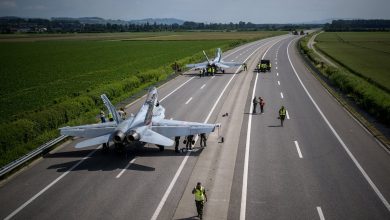Biden’s last-minute Ukraine reversals come too late

In a major reversal, on Nov, 17, U.S. President Joe Biden succumbed to the calls of Ukraine’s loudest supporters in Washington and Europe by authorizing Kyiv’s use of U.S.-supplied Army Tactical Missile Systems (ATACMS) deeper into Russia. The move was the most dramatic change to Washington’s Ukraine policy since the Nov. 5 election, but hardly the only one. A week earlier, the Biden administration announced that U.S. contractors would be allowed inside Ukraine for the first time since the war began to maintain Kyiv’s fleet of U.S.-made F-16 aircraft. And on Nov. 19, Biden ordered the transfer of anti-personnel mines to buttress the Ukrainian army’s defenses in the east.
The expanded permissions and new weapons, however, come too late to give Ukraine an advantage on the battlefield or more leverage at the negotiating table. Instead, their primary effect may be to trigger serious escalation that leaves Kyiv weakened and the United States worse off. With Biden on his way out and President-elect Donald Trump hoping to quickly end the war, Russian President Vladimir Putin has less incentive than ever to be restrained in the face of what he views as a dramatic, aggressive U.S. policy shift.
There should be no illusions that employing longer-range missiles or anti-personnel mines will be a panacea for Ukraine. As Biden administration officials acknowledge, lifting restrictions on ATACMS missiles will not change the course of the war. With the lack of Russian targets — Russia has relocated 90 percent of its aircraft out of ATACMS range—and the limited amount of ATACMS available in U.S. stocks, deeper Ukrainian strikes into the Russian interior are unlikely to squeeze Moscow’s supply lines to the extent that its offensive operations are significantly impacted. Expanded permissions, however, might instead speed Ukraine’s own military breakdown by encouraging Kyiv to invest more of its scarce resources in fending off Russian forces in Kursk, where the Ukrainian army has lost approximately half of the territory it captured in August.
Anti-personnel mines, on the other hand, could support Ukraine’s shift to a defensive strategy. But with its overstretched military barely holding on, it is not clear these mines will arrive in sufficient quantities or fast enough for Ukraine to make effective use of them before winter temperatures freeze the ground solid. Moreover, it is Ukraine’s severe manpower shortage, not the lack of specific types or quantities of weapons, that is the most serious constraint on its ability to halt Russia’s advances in the Donbas. For this reason, sending U.S. contractors into Ukraine will also offer few benefits. It will not free up enough personnel to address Kyiv’s need for frontline soldiers and will only marginally speed equipment repairs.
Biden’s decision won’t save Ukraine, but it already seems to have affected Russian President Vladimir Putin’s calculations in ways that hurt rather than help Kyiv. Putin has taken the opportunity to increase punishing air strikes on Ukrainian cities, forcing a temporary closure of the U.S. embassy in Kyiv. It was likely no coincidence that Russia used an experimental intermediate range ballistic missile inside Ukraine days after Kyiv began using U.S.-supplied ATACMS inside Russia. Putin’s subsequent statement suggest this, and additional new weapons may be used more extensively going forward. This would be devastating for Ukraine, promising additional economic destruction to the country and leaving the country worse off when settlement talks begin.
Ukraine’s use of ATACMS may destroy more Russian military targets further from the frontline, but it won’t prevent Russia from ramping up drone and missile strikes on Ukrainian cities, targeting Ukraine’s energy infrastructure more heavily or surging forward on the eastern front more furiously. After all, when cornered, Putin doesn’t de-escalate—he doubles down. This is what happened in the fall of 2022, when a successful Ukrainian counteroffensive in Kharkiv compelled Putin to announce a partial mobilization to stem the bleeding and reinforce the Russian army’s ranks. This shouldn’t be a surprise; Putin started the war, and his legacy will rise and fall depending on the war’s outcome.
Russia’s escalation won’t stop inside Ukraine either. Putin may not turn to nuclear weapons, but he is likely to ramp up horizontal escalation outside the Ukrainian theater. This threat has grown more acute in the wake of Biden’s policy changes. Moscow will now view the United States and Europe as direct combatants in the war and respond accordingly. Indeed, the U.S. intelligence community cited this risk as a reason to refrain from providing ATACMS to Kyiv in the first place.
These fears are more than just speculation. Since February 2022, for instance, Russia has repeatedly used unclaimed sabotage operations in Europe to cause disruptions to civilian and military infrastructure that test European willingness to bear costs on behalf of Ukraine. The latest incident in this campaign may be the severing of two undersea cables in the Baltic Sea, though definitive attribution has yet to be made.
U.S. policymakers should assume that Russia will now step up these activities, and not just in Europe. Russia could even take steps that have long-term implications for the United States and its ability to protect allies in the future by, for instance, accelerating its sharing of sensitive weapons and expertise with other U.S. adversaries—more advanced missiles and better targeting data with the Houthis, submarine technology with China, and satellite know-how with North Korea—or increasing its recruitment of foreign mercenaries.
At a time when Ukraine is at its weakest, Biden’s last minute policy changes come too late to shift the balance of power on the battlefield. Russia will now be even more resistant to calls for a diplomatic settlement than it was in the past and more willing to retaliate inside and outside Ukraine. No policy decision is cost-free, and neither is this one. The war’s consequences could soon become immeasurably more dangerous.
Daniel R. DePetris is a fellow at Defense Priorities and a syndicated foreign affairs columnist for the Chicago Tribune.
Jennifer Kavanagh is a senior fellow and director of military analysis at Defense Priorities.







